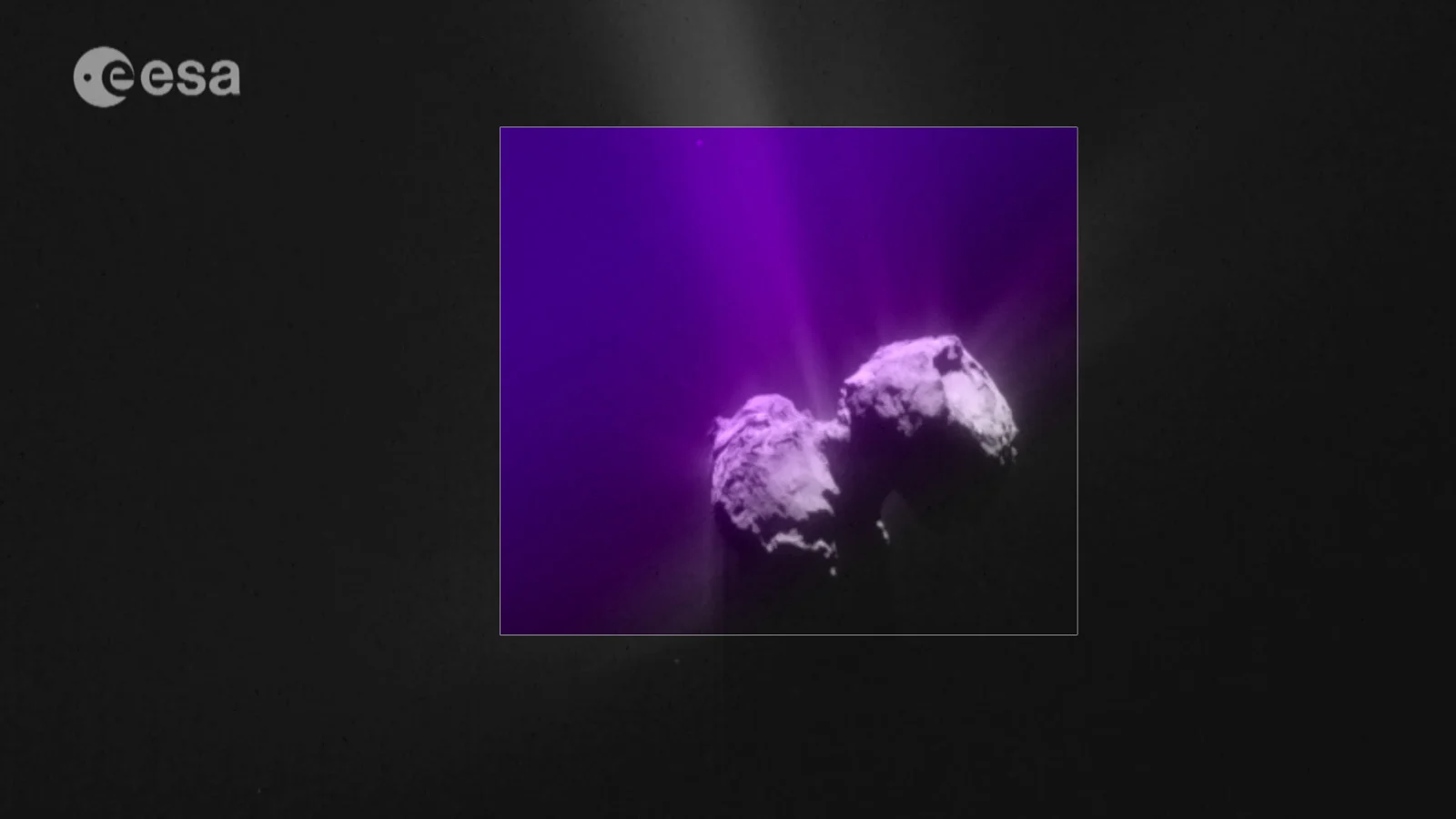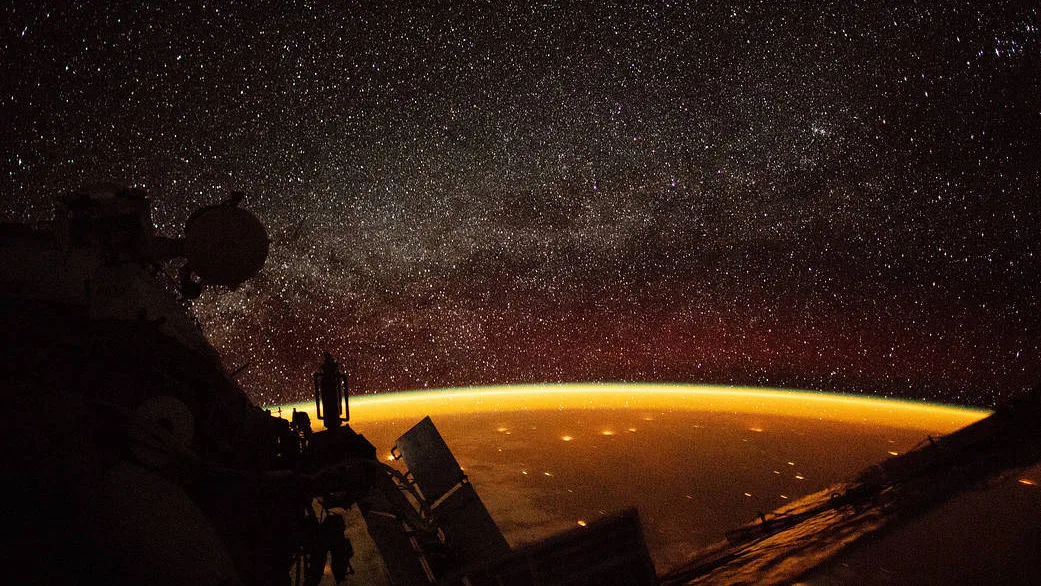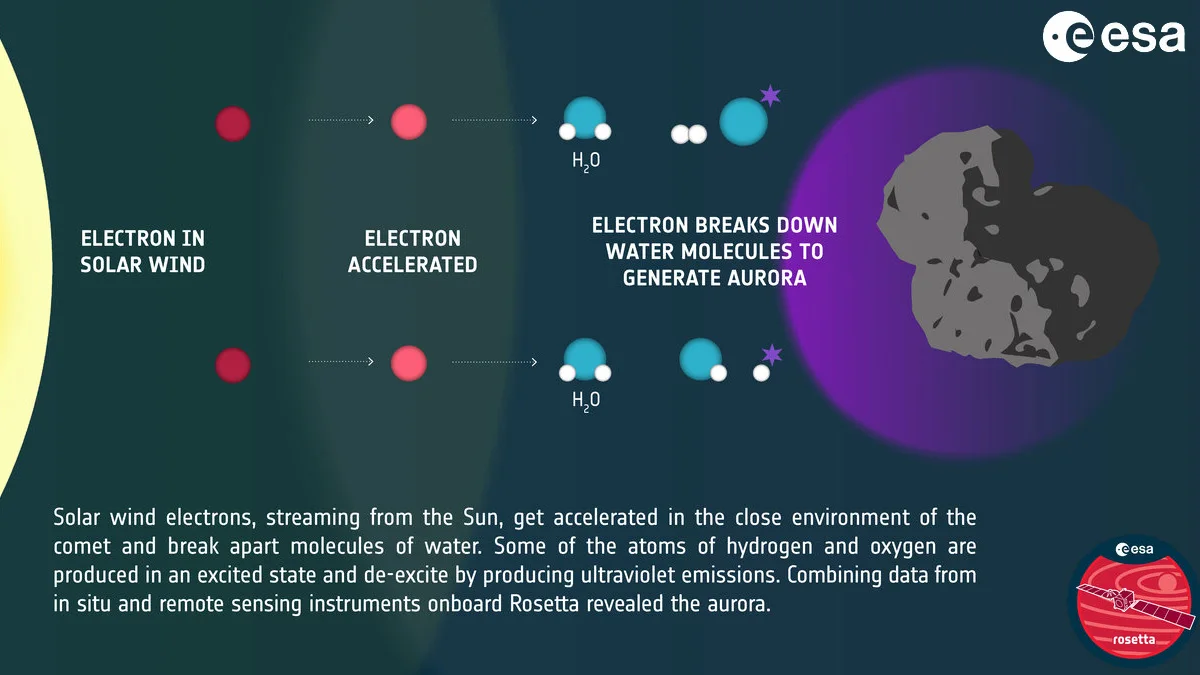
Unique ultraviolet auroras discovered around Rosetta comet
"Auroras are inherently exciting – and this excitement is even greater when we see one somewhere new," says Rosetta's project scientist Matt Taylor.
Nearly four years after its mission ended, the Rosetta spacecraft is still helping scientists making amazing discoveries. The newest - that comets can produce their own unique form of Northern Lights!
Space weather occurs throughout the solar system. Due to the solar wind, and the 'solar storms' known as coronal mass ejections, we see auroras here on Earth, and other planets such as Venus, Mars, Jupiter, Saturn and Uranus. They've even been spotted around Jupiter's largest moon, Ganymede. What scientists did not expect to find, though, is auroras produced by comets.
While examining data from the ESA's Rosetta mission to study comet 67P/Churyumov-Gerasimenko, a team of scientists noticed a unique kind of far-ultraviolet glow being emitted from around the comet. At first, according to NASA, the researchers interpreted this glow as a phenomenon called dayglow - the emission of light from molecules energized by the absorption of direct sunlight. We see this same phenomenon high up in the atmosphere here on Earth.

Airglow was spotted by astronauts on board the International Space Station on October 7, 2018. Credit: NASA
Pairing the data from different instruments on Rosetta, though, they discovered that the ultraviolet glow surrounding comet 67P/C-G was something entirely different.
"The glow surrounding 67P/C-G is one of a kind," Marina Galand, a professor of planetary science at Imperial College London and lead author of the new study, said in a NASA press release. "By linking data from numerous Rosetta instruments, we were able to get a better picture of what was going on. This enabled us to unambiguously identify how 67P/C-G's ultraviolet atomic emissions form."
According to this study, published in the journal Nature Astronomy, Comet 67P/C-G's glow was not caused by the absorption of sunlight. Instead, it was a type of aurora!
RELATED: WATCH THIS INCREDIBLE AURORA TIME-LAPSE FROM SASKATCHEWAN
While they are both displays of light, scientists differentiate between dayglow and auroras based on their cause. Dayglow is caused by the absorption of photons (sunlight). Auroras form due to collisions with high-energy solar particles (electrons or protons). Most often, these solar particles are captured by a planet's or moon's magnetic field, where they are accelerated and funnelled down into the atmosphere. There, they collide with air molecules, passing energy to them, which the molecules then dump by emitting flashes of light.
Rosetta's instruments revealed that, despite comets not having magnetic fields, this is the same process occurring around 67P/Churyumov-Gerasimenko.

This graphic shows the processes that result in Rosetta's unique auroras. Credit: ESA
As the researchers showed, Rosetta was capturing high-energy electrons from the solar wind plunging into the comet's coma 'atmosphere', where they were slamming into molecules of water and other gases. This was splitting those molecules apart into their component atoms. In some cases, the atoms were left in an energized state, which resulted in them emitting bursts of ultraviolet auroral light.
"The process by which the electrons are accelerated is similar to some of the processes that drive auroras at Earth and Mars, despite 67P/C-G lacking an intrinsic magnetic field," Galand said in an Imperial College London press release. "In fact, the magnetic environments of moons, planets, and comets are all very different, so it's exciting and intriguing that we see auroras at all of them."
When Rosetta left on its mission to Comet 67P/C-G, it was not designed to investigate space weather. However, according to both NASA and the ESA, this new discovery could help space weather scientists better understand the solar wind and how solar particles flowing within its streams change over time.
"By providing better information on how the Sun's radiation affects the space environment they must travel through," the space agencies said, "such information could ultimately can help protect satellites and spacecraft, as well as astronauts travelling to the Moon and Mars."
Sources: NASA | ESA | Imperial College London











